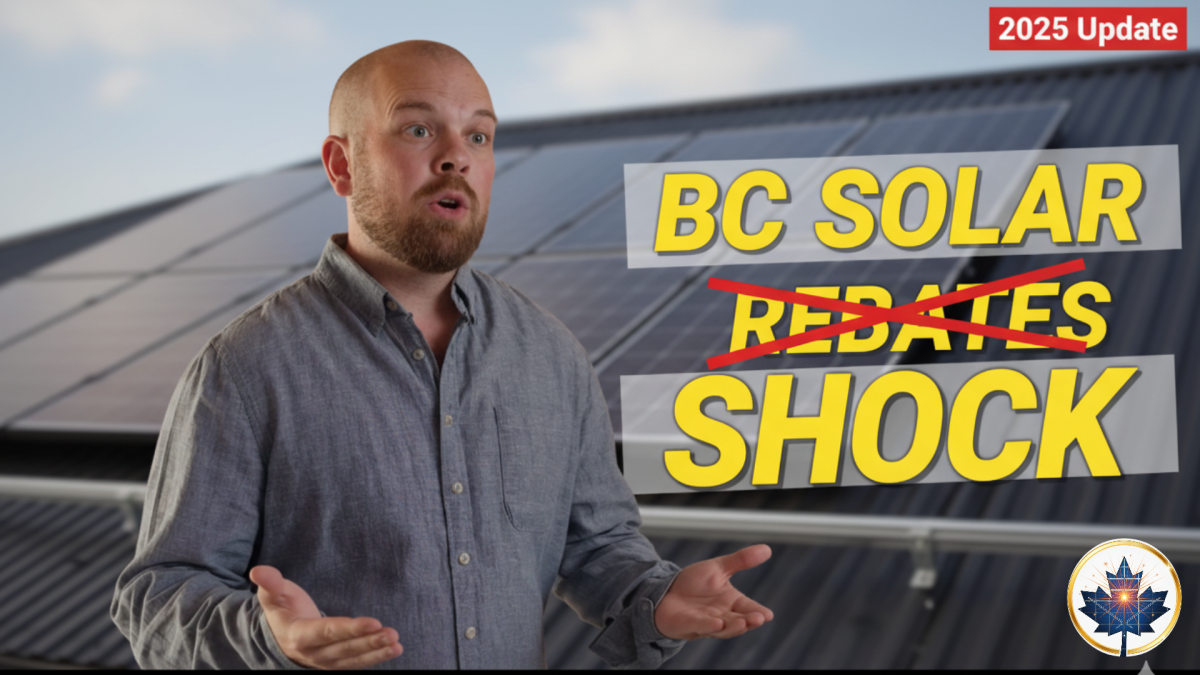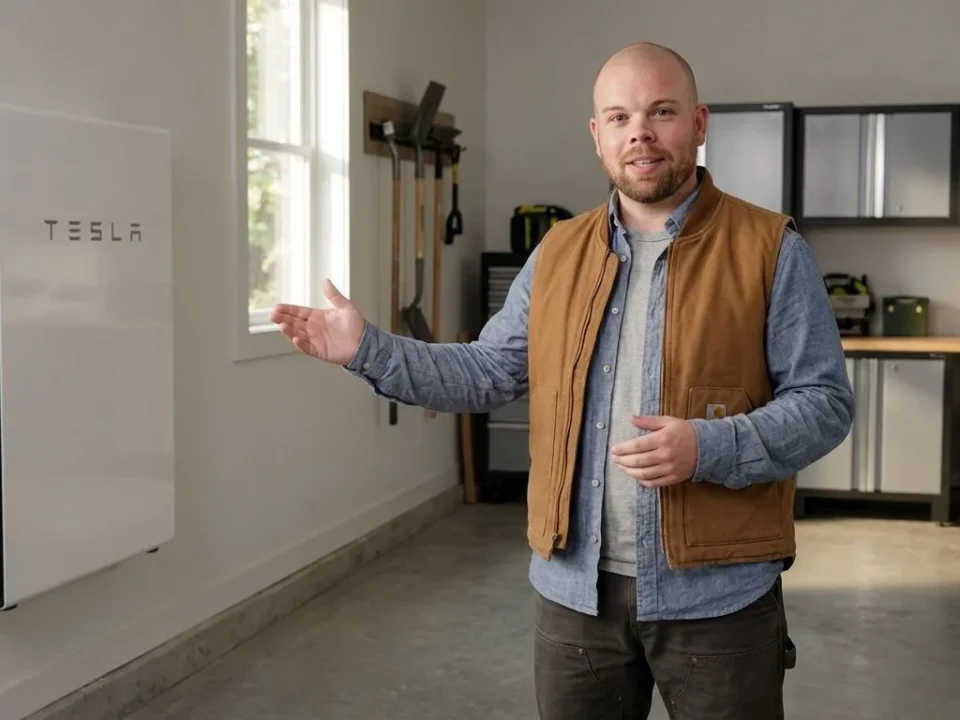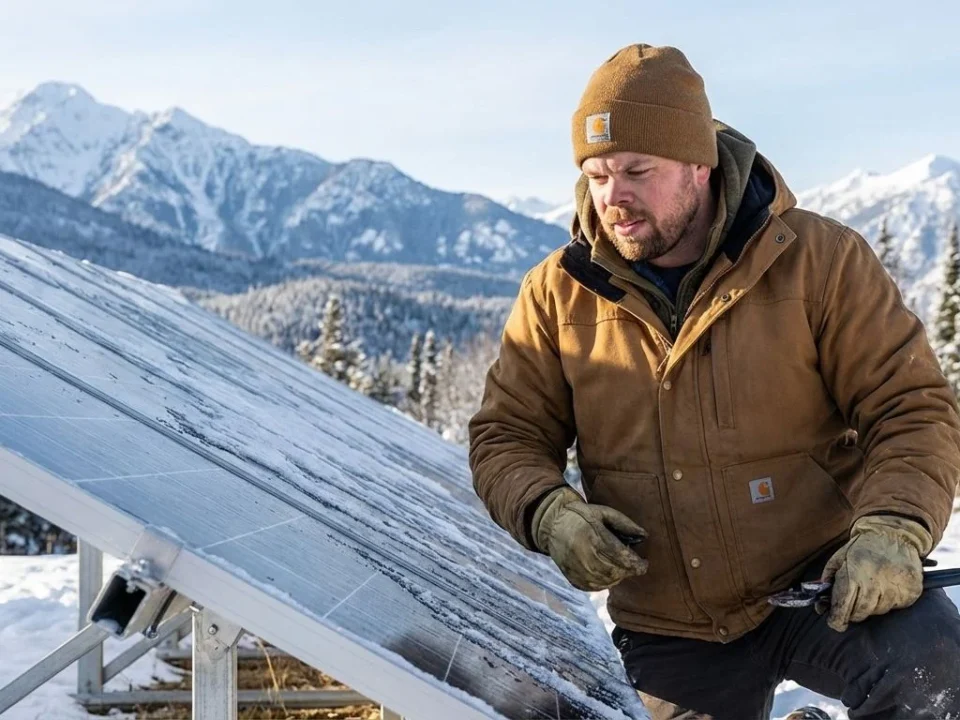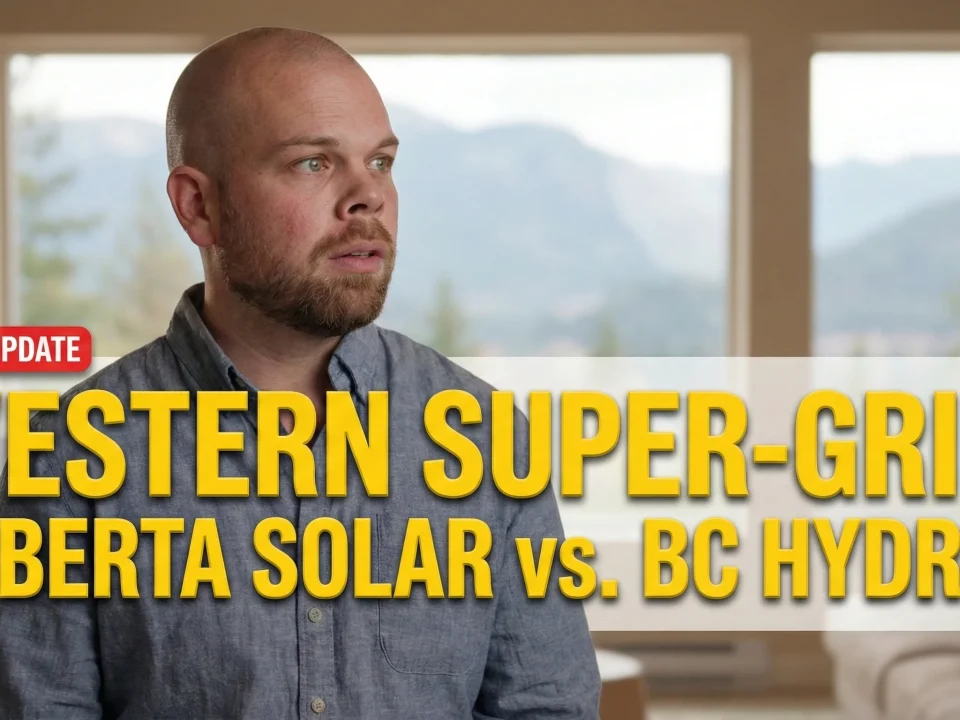
Solar Power Incentives Canada: Grants, Rebates Federal And Provincial
October 16, 2025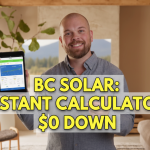
Cost Of Solar Panels in BC Calculator: Instant & Accurate + Incentives
October 23, 2025As the owner of SolarEnergies.ca, I get this question daily: “What rebates can I get for solar in BC?” I’ve been in this industry for over a decade, and the amount of confusion I’m seeing right now is at an all-time high.
Let’s cut right to it. The federal Greener Homes grant is gone. But in its place, British Columbia has stepped up and is now a leader in Canada. The new 2025 strategy is to “stack” three powerful incentives: a $10,000 provincial rebate, a PST exemption, and 0% installer financing.
I’ve written a complete guide on solar panels in BC that covers the basics, but here I’ll break down the money—what’s working right now, and what’s gone for good.
Active Incentives in BC (The 2025 “Solar Stack”)
This is the current, active strategy for going solar in British Columbia. You can combine these.
1. The Big One: BC Hydro’s Solar & Battery Rebate Program
This is the incentive you need to know about. BC Hydro, with provincial funding, is offering two separate, stackable rebates for customers installing renewable energy. You can find the full program details right on BC Hydro’s website. (Note: As of late 2024, this program is administered alongside their EV charger rebates, but includes solar and battery).
- Solar Panel Rebate: You can get $1,000 per kilowatt (kW) of solar PV installed, up to a maximum of $5,000.
- Battery Storage Rebate: You can get $500 per kilowatt-hour (kWh) of battery capacity, up to a maximum of $5,000.
This means you can get up to $10,000 in combined rebates for a full solar and battery system.
Important Details:
- 50% Cap: The solar rebate is capped at 50% of your solar project cost (not including the battery).
- BC Hydro Customers Only: This program is for BC Hydro customers. FortisBC and municipal utilities are not part of this.
- Pre-Approval is Required: You must go through BC Hydro’s interconnection process and get rebate pre-approval before you install.
How to “Win” the Rebate Game: The Smart System Strategy
Let’s put this into a table to make it crystal clear. The goal isn’t just to install the biggest system; it’s to install the smartest system for your money by maximizing the rebate.
| Home Profile | Approx. Annual Use (kWh) | System Strategy | Rebate Calculation | Total BC Hydro Rebate |
|---|---|---|---|---|
| Small Home | ~4,000 kWh | 4kW Solar + 5kWh Battery | $4,000 (Solar) + $2,500 (Battery) | **$6,500** |
| Medium Home | ~9,000 kWh | 5kW Solar + 10kWh Battery | $5,000 (Solar) + $5,000 (Battery) | **$10,000** |
| Large Home | ~16,000+ kWh | 5kW Solar + 10kWh Battery | $5,000 (Solar) + $5,000 (Battery) | **$10,000** |
| Large Home (Max Power) | ~16,000+ kWh | 12kW Solar + 10kWh Battery | $5,000 (Solar Capped) + $5,000 (Battery) | **$10,000** |
Notice the ‘Large Home’ and ‘Large Home (Max Power)’ rows. The “Max Power” homeowner installed a much bigger 12kW system to cover their entire bill, but they still only received the same $10,000 rebate as the person who installed the 5kW system.
This shows the financial “sweet spot.” For everyone with average-to-high use, the smartest first step is to install the 5kW/10kWh system, max out the $10,000 rebate, and drastically reduce your bill. The payback on the extra panels (from 6kW to 12kW) is much longer without a matching rebate.
2. The Automatic Win: 7% PST Exemption
On top of the rebate, all qualifying renewable energy equipment—like solar panels, batteries, inverters, and wiring—is exempt from the 7% Provincial Sales Tax (PST). This is confirmed in the provincial government’s sales tax bulletin (see Bulletin PST 203). This is a nice, automatic saving that shaves a significant amount right off the top of your quote.
3. The Enabler: 15-Year, 0% Interest Loans
This is the tool that makes the whole project manageable. After you subtract your $10,000 rebate and 7% PST savings from the system cost, you’re left with the final price.
We are happy that we now can offer 0% interest financing (often with $0 down) for 15 years on that remaining amount. This is how you pay for the system. The goal is to make your new monthly loan payment less than your old hydro bill. This switch from grants to financing is the new normal, and I’ve detailed how to finance your solar panels now that the federal programs are done.
4. The Payback Engine: BC Hydro’s Self-Generation Program (Net Metering)
This isn’t a rebate, but it’s the program that makes your system pay you back. It’s a billing arrangement that all grid-connected solar systems use. You can read the full details on the BC Hydro Self-Generation Program page.
Here’s how it works in BC:
- Full Retail Credit: During the day, your panels produce power. Any excess energy you don’t use flows to the grid, and BC Hydro credits you at the full retail rate (e.g., ~15 cents/kWh on Step 1). This is much better than in many other provinces.
- Use Credits at Night: At night, you draw power from the grid. BC Hydro uses up your accumulated credits to offset this cost.
- Annual Payout: Once a year (on March 1st), BC Hydro looks at your account. If you still have a surplus credit balance, they pay you out for it at the market rate (around 9.99 cents/kWh).
This is where the “smart” part of a modern battery comes in. It does all the work for you. It automatically performs “energy shaving” or “self-consumption”—storing your free solar power during the day when you’re producing it, and then automatically running your home from that battery at night. This ensures you use every valuable kilowatt-hour yourself instead of buying from the grid at the higher retail rate.
The goal is to size your system so you use most of your credits and don’t have a large surplus.
Why Still Get a Battery with Full Retail Credit?
This is a smart question. If you get full credit, why spend money on a battery?
- The $5,000 Rebate: First, the province is giving you up to $5,000 to get the battery. This massively cuts the cost.
- Backup Power: This is the real answer. A battery (like a Tesla Powerwall in Canada or similar) gives you energy independence. When a storm knocks out the grid, a solar-only system shuts down (for safety). A solar and battery system keeps your lights on, your fridge cold, and your internet working.
- Future-Proofing: As rates change, owning your own power is always the safest bet.
What If I’m Not a BC Hydro Customer? (FortisBC, Nelson Hydro)
This is a critical distinction.
- FortisBC (e.g., Kelowna): As of 2025, FortisBC does not offer an equivalent $10,000 solar rebate. This BC Hydro program was funded by the province for BC Hydro customers only. FortisBC customers can still use their Net Metering Program and get the 7% PST exemption, but the upfront cost will be higher without the big rebate. I’ve broken down the costs for solar in Kelowna based on this.
- Municipal Utilities (e.g., Nelson Hydro): You are in a unique spot. Nelson Hydro, for example, has its own “EcoSave” program. You must contact your local utility directly to see what they offer.
Solar Incentives That Are No Longer Available
This is the source of all the confusion. These programs are closed to new applicants. If you see a website still advertising them, that site is out of date. You can see the official “closed” status on the Natural Resources Canada website.
I wrote an entire post on what to do now that the Canada Greener Homes grant is gone because it’s caused so much confusion.
- The Canada Greener Homes Grant ($5,000): This was the federal grant that gave homeowners up to $5,000 back on their installation. It was wildly popular and stopped taking new applicants in early 2024. It is gone.
- The Canada Greener Homes Loan (0%, 10-Year): This was the federal loan that ran alongside the grant. It is also closed to new applicants. This is why private 15-year, 0% financing from installers has now taken its place.
How to Use the 2025 Solar Incentives: Process & Payback
Okay, so the plan is to stack the $10k rebate, PST exemption, and 0% financing. Here’s the step-by-step process.
How Can I Determine If I’m Eligible?
Eligibility is split into two parts: the rebate and the financing.
Key Eligibility for the BC Hydro Rebate:
- You must be a BC Hydro customer.
- You must have a residential account and be the property owner.
- You must get pre-approval from BC Hydro before installation.
- The system must be installed by a qualified installer.
- This is important: The program is for new solar systems. You cannot replace an existing solar PV system and enroll it as “new.”
- You must check the full terms and conditions on the BC Hydro site.
Solar Panels Rebate BC Relevant posts
Key Eligibility for 15-Year, 0% Financing:
- This is offered by the solar installer, and eligibility is based on your soft credit approval.
What Is the Process for Applying for Solar in BC?
I’ll be blunt: the process is heavy on paperwork and can be slow. A good solar installer will handle most of this, but you need to know the steps.
- Step 1: Get Quotes. Contact 2-3 reputable solar installers. (Make sure you read my list of key questions to ask solar companies before you sign anything). Ask them to design a system and provide a quote that clearly shows the BC Hydro rebate and PST exemption.
- Step 2: Apply for BC Hydro Pre-Approval. Your chosen installer will submit your “Net Metering Interconnection Application” and your rebate pre-approval application to BC Hydro. This is the most critical step.
- Step 3: Apply for 0% Financing. Once you have the final post-rebate cost, you’ll apply for the installer’s 0% financing. Be wary of any company promising “free solar” – it’s usually just this financing plan, which I explain in this article on “free solar” scams.
- Step 4: Installation. Once you have financing approval and BC Hydro’s technical approval, your team can install the solar panels and battery storage.
- Step 5: Inspection & Final Submission. A local electrical inspection is done. The passing report is sent to BC Hydro, who then gives “Permission to Operate.” Your installer submits the final paperwork for your rebate.
Time Frame: From your first call to an installer to your system being operational? Be prepared for 3-6 months.
How Much Money Can I Save with Solar in BC?
Let’s re-run the numbers with this new $10,000 rebate. This makes the system cash-flow positive from day one. You can play with the numbers using a solar panels calculator, but the logic holds.
Disclaimer: These are estimates. Your installer will provide a custom calculation. (For a deeper look at what makes up these numbers, see my complete home solar system price guide).
Look at that! Your original hydro bill was $292/month. After the $10,000 rebate, your new combined payment (loan + remaining hydro bill) is just $209/month. You are saving $83 every month from day one, and after 15 years, the loan is gone and your only cost is the small $42/month connection bill.
What Are the Benefits Beyond the Bill?
This isn’t just about money.
- Energy Resilience: A solar and battery system means you have power when the grid goes down. This is a massive piece of mind. This is one of the key reasons solar panels increase home value in Canada.
- Lower Carbon Footprint: You’ll be running your home on clean energy.
- Future-Proofing: An electrified home is the standard of the future. You’re simply ahead of the curve.
My Final Thought
Don’t let the end of the federal programs stop you. This BC Hydro rebate stack is, in my opinion, better than the old federal grant. A $10,000 instant rebate combined with a 7% PST exemption and 0% financing is an incredible deal. It shifts the entire proposal from a high upfront cost to a simple question: “Do you want to swap your hydro bill for a much lower, fixed loan payment that eventually disappears?”
For BC Hydro customers, the answer in 2025 is a clear yes. (If you want to read more of my straight-talk guides, you can check out the SolarEnergies.ca blog).

